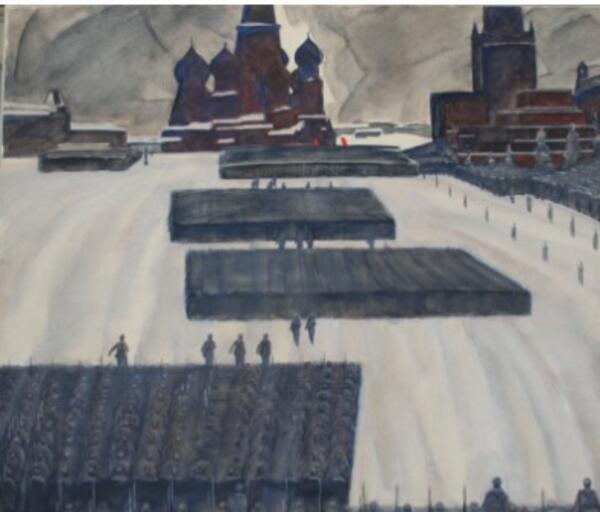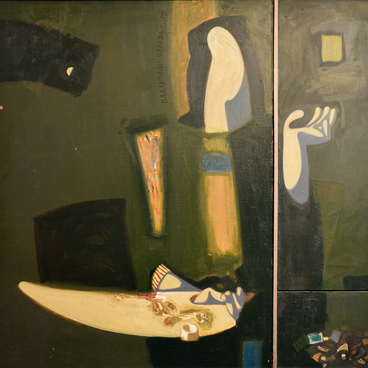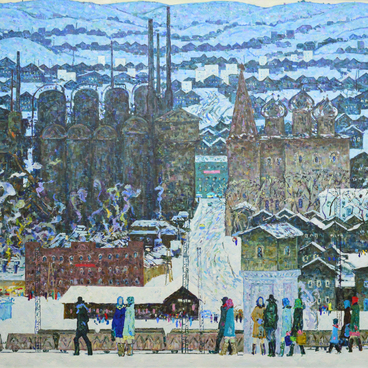The parade which took place on the Red Square on November 7th, 1941, was an important page in the history of the Great Patriotic War. The German army almost made it to the capital, where a state of siege was declared and a curfew was imposed. The decision to organize a parade was made following the wish to raise the morale of the fighters and chase the panic away. The parade was prepared in strict secrecy in order to prevent the provocative acts and misinformation. It was symbolical that from the Red Square the soldiers went directly to the battle line. The capital was left behind their backs and its capture by the enemy’s army could change the course of history forever.
This defining historical moment was depicted by many Soviet painters, such as Konstantin Yuon, Konstantin Vasilyev, Yury Reyner, Fyodor Kogan, Daniil Cherkes. Each of them depicted this event in their own way highlighting the different things, be it the Kremlin towers, the lines of soldiers, the mausoleum, or the tribune.
This defining historical moment was depicted by many Soviet painters, such as Konstantin Yuon, Konstantin Vasilyev, Yury Reyner, Fyodor Kogan, Daniil Cherkes. Each of them depicted this event in their own way highlighting the different things, be it the Kremlin towers, the lines of soldiers, the mausoleum, or the tribune.



